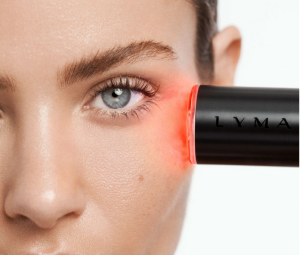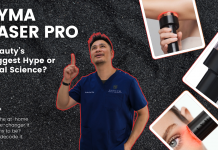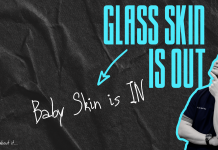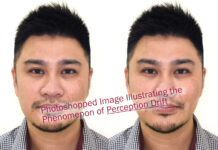
The aesthetics world is abuzz with the launch of the Lyma Laser Pro, a next-generation at-home device that’s being hailed as “the most important beauty launch in a generation.” With celebrity endorsements, claims of a 100-million-person waitlist, and bold statements that it is neither a traditional laser nor LED, the Lyma Laser Pro has positioned itself as a category-defining innovation.
But is it really the answer to lasers, as claimed?
Let’s examine the science behind the Lyma Laser Pro, compare it to its predecessor and professional-grade clinical lasers, and evaluate what this means for practitioners and patients alike.
What Is the Lyma Laser Pro?
The Lyma Laser Pro builds upon the original Lyma Laser—a low-level laser therapy (LLLT) device used for skin rejuvenation. While the original Lyma Laser already made waves as the world’s first at-home laser to claim zero thermal damage and no need for protective eyewear, the Pro version promises even more.
LYMA Laser vs. LYMA Laser Pro: Breaking Down the Specs
| Feature | Lyma Laser | Lyma Laser Pro |
| Power Output | 505 mW | 1450 mW |
| Treatment Head Size | 8 cm² | 30 cm² |
| Treatment Time | 3 minutes | 3 minutes |
At first glance, the Lyma Laser Pro boasts almost 3 times the power and nearly 4 times the treatment surface area. It appears to offer significantly more total energy delivery per session, but what does this really mean in clinical terms?
Does More Light Mean Better Results?
Theoretically, more light equals more energy delivered. But that doesn’t automatically translate to three times the results.
- Deeper penetration requires more concentrated power, not just more light.
- There are currently no published clinical trials for the Lyma Laser Pro that support claims of vastly superior efficacy compared to the original.
- Total energy delivery is increased, which could yield faster visible results—but not necessarily deeper or more permanent changes.
Until peer-reviewed data is available, these claims remain promising but unsubstantiated.
Comparing to Clinical Devices: Nd:YAG as a Benchmark
To fairly evaluate the Lyma Laser Pro, we must compare it with similar laser modalities used in clinical practice. One such gold-standard is the Nd:YAG (1064 nm) non-ablative laser.
| Parameter | Fotona Nd:YAG | Lyma Laser Pro |
| Wavelength | 1064 nm | 808 nm |
| Power Output | 35 – 80 W | 1.45 W |
| Penetration | Deep dermis | Superficial-mid dermis |
| Mode | Pulsed or continuous | Continuous (LLLT) |
| Safety Profile | Requires physician operation | Safe for home use |
Clinical lasers like Fotona’s Nd:YAG deliver up to 55 times more power than the Lyma Laser Pro, allowing deeper collagen stimulation, vascular lesion treatment, and dermal remodeling. These results are often visible within fewer sessions, especially when treating conditions such as:
- Rosacea
- Telangiectasia
- Pore size
- Acne scars
- Skin laxity
While the Lyma Laser Pro might improve skin tone, texture, and radiance over time, its low power density and superficial penetration classify it under LLLT—a modality that is best suited for gradual, cumulative improvement with daily use.
So Where Does the Lyma Laser Pro Fit In?
Despite the hype, the Lyma Laser Pro should be viewed not as a replacement, but as a complement to in-clinic treatments.
Advantages of the Lyma Laser Pro
- Non-invasive and pain-free
- Safe for all skin types
- No downtime
- Convenient for daily use at home
- Wider coverage area for faster treatments
Limitations
- Slower results compared to clinical lasers
- Shallower penetration depth
- Requires consistent daily use
- Clinical validation still pending
Conclusion: Is the Lyma Laser Pro Worth It?
From a clinical education standpoint, the Lyma Laser Pro represents an exciting advancement in at-home beauty tech. It leverages medical-grade low-level laser therapy, expands surface area coverage, and increases total energy delivery compared to its predecessor.
However, it still does not match the depth, speed, or versatility of in-clinic devices like the Fotona Nd:YAG laser. It’s best viewed as a maintenance tool or adjunct therapy—ideal for prolonging the effects of clinical treatments, or for users who prefer gentle, gradual results without downtime.
Verdict:

The Lyma Laser Pro is a step forward in home-use technology, but it is not (yet) the definitive replacement for professional lasers. Until clinical data supports its bold claims, it remains a high-end LLLT device—effective with consistency, but within the bounds of physics and current evidence.
References
- Avci, P., Gupta, A., Sadasivam, M., Vecchio, D., Pam, Z., Pam, N., & Hamblin, M. R. (2013). Low-level laser (light) therapy (LLLT) in skin: stimulating, healing, restoring. Seminars in Cutaneous Medicine and Surgery, 32(1), 41–52. https://doi.org/10.12788/j.sder.0023
- Hamblin, M. R., & Demidova, T. N. (2006). Mechanisms of low-level light therapy. Proceedings of SPIE, 6140, 614001. https://doi.org/10.1117/12.646294
- Bjerring, P., Clement, M., Heickendorff, L., Egevist, H., & Kiernan, M. (2004). Selective non-ablative wrinkle reduction by laser. Journal of Cutaneous Laser Therapy, 6(4), 163–169. https://doi.org/10.1080/14764170410032370
- Trelles, M. A., Urdiales, F., & Al-Zarouni, M. (2010). Nonablative facial rejuvenation with 1064-nm Nd:YAG laser. Dermatologic Surgery, 26(3), 226–232. https://doi.org/10.1046/j.1524-4725.2000.99214.x
- Chung, H., Dai, T., Sharma, S. K., Huang, Y. Y., Carroll, J. D., & Hamblin, M. R. (2012). The nuts and bolts of low-level laser (light) therapy. Annals of Biomedical Engineering, 40(2), 516–533. https://doi.org/10.1007/s10439-011-0454-7
- Goldman, M. P., & Weiss, R. A. (2011). Cutaneous Laser Surgery: The Art and Science of Selective Photothermolysis (2nd ed.). Elsevier Health Sciences.
- Weiss, R. A., Weiss, M. A., Beasley, K. L., & Munavalli, G. (2005). Our approach to non-ablative treatment of photoaging. Lasers in Surgery and Medicine, 37(1), 2–8. https://doi.org/10.1002/lsm.20123
- LYMA Life Ltd. (2024). The LYMA Laser Pro. Retrieved from: https://lymalife.com
- American Society for Laser Medicine and Surgery (ASLMS). (2023). Clinical Applications of Nd:YAG Laser. Retrieved from: https://www.aslms.org
- Karsai, S., & Raulin, C. (2011). Laser treatment of vascular lesions: Review and recommendations. Lasers in Medical Science, 26(3), 403–414. https://doi.org/10.1007/s10103-010-0886-2
















